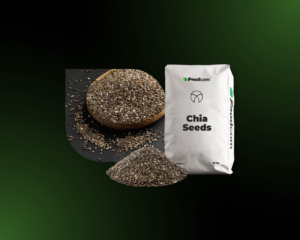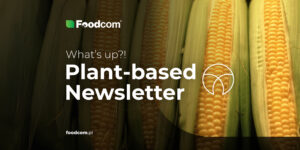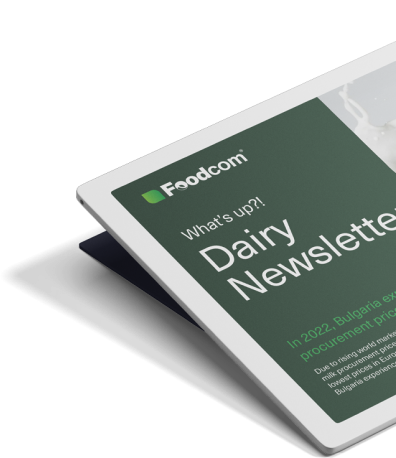- Almond production in California has increased by 21% thanks to favourable weather conditions.
- Despite a decline in US yields, the global value of the pistachio market is growing, and California has overtaken Iran as the largest exporter.
- Thailand’s plan to purchase US agricultural goods for 2.8 billion USD is intended to reduce trade tensions and increase imports of corn and soybean meal.
- The European Union is introducing a new agricultural strategy until 2040, including digitalisation, support for farmers and restrictions on pesticide imports.
Welcome Partners!
Welcome back to our newsletter!
The world of agriculture and plant-based products is changing fast! From the growing almond crop in California to the resilience of the pistachio market and the growing role of potato protein in animal feed, 2025 promises to be a year of transformation. But that’s not all – Thailand is taking bold steps to avoid US tariffs, while the EU is setting out a broad vision for agriculture that could redefine sustainability and trade rules. Meanwhile, Brussels is tightening restrictions on pesticide imports, creating tensions with major trading partners.
Let’s see what else has happened recently in the plant products market!
Almonds
As of February 2025, the almond industry is grappling with a complex market landscape. The 2024 almond crop is forecast at 1.36 million metric tonnes (£3 billion), up 21% from the previous season’s final production of 1.12 million metric tonnes (£2.47 billion). This increase is attributed to favourable weather conditions during the flowering season in California, which improved pollination and yields. The USDA is projecting an average yield of approximately 2,170 kg per hectare (4,780 pounds per acre), up from 1,790 kg per hectare (3,945 pounds per acre) in the 2023-2024 season. Despite the increased supply, almond prices remain relatively stable due to continued demand in both domestic and international markets. A December report published by the Almond Board indicates that cumulative shipment volumes are at levels comparable to the previous season, with declines in some markets offset by increased demand in regions such as the Middle East, including the UAE, Turkey and Saudi Arabia.
Organic Pistachios
The pistachio market is showing resilience to fluctuations. For the 2024/2025 season, US pistachio production has seen a significant decline in yields and available stocks. Despite this, the global pistachio market reached a value of approximately US$4.22 billion in 2024 and is projected to grow at a CAGR of 5.7% between 2024 and 2025, reaching a value of approximately US$4.46 billion by 2025. The expansion of the market is being driven by changing consumer preferences, growing interest in plant-based products and greater demand in various sectors of the food industry. It is noteworthy that California has overtaken Iran to become the largest exporter of pistachios in the world, with significant demand from China contributing nearly US$3 billion in revenue last year.
Potato protein
What else?
Thailand wants to buy $2.8bn of US agricultural goods to avoid US tariffs
Thailand plans to purchase US$2.8 billion worth of US agricultural commodities to reduce its trade surplus with the US and avoid potential tariffs on Thai exports. The president of the Thai Feed Manufacturers Association, Pornsil Patchrintanakul, stressed that the implementation of the plan depends on relaxing import regulations, which could make US products such as soybean meal and corn more competitive.
Currently, Thailand imports soybean meal mainly from Brazil and does not import maize from the US. To increase its imports from America, it is considering lowering the 2 per cent import tax on soybean meal and temporarily removing WTO tariffs on maize. In addition, it plans to increase imports of dried grain broth (an ethanol by-product), which would require a reduction in the 9 per cent tax on this commodity.
Planned purchases could be as high as 3 million tonnes of soybean meal and 4 million tonnes of maize per year, but their implementation will depend on changes in trade policy.
European Commission presents plan to modernise agriculture by 2040
on 19 February 2025, the European Commission presented its ‘Vision for Agriculture and Food ‘ – an action plan to make the European agri-food sector more attractive, competitive and sustainable by 2040. The strategy includes simplifying regulation, increasing innovation and digitalising agriculture. In 2025, it plans to present a package of simplification of existing regulations and a digitalisation strategy for agriculture to support the transition to digital technologies.
The vision focuses on four key priorities: making the sector more attractive, ensuring its competitiveness and sustainability, securing the future of agriculture and strengthening its resilience. Planned actions include, among others, ensuring a decent income for farmers, harmonising production standards for imported goods and supporting young farmers through a generational renewal strategy.
The Commission has also committed to carefully consider any further bans on pesticides – unless alternatives are available within a reasonable timeframe – and to facilitate access to biopesticides on the EU market.
EU plans to restrict imports of crops with banned pesticides
The European Union plans to tighten restrictions on imports of crops treated with pesticides banned in the Community. The European Commission’s draft document, entitled ‘A Vision for Agriculture and Food’, envisages the alignment of production standards for imported products with EU standards, particularly in the use of pesticides and animal welfare. The aim of these changes is to ensure fair competition for European farmers and to protect public health and the environment.
The planned regulations could affect non-EU suppliers, including the United States, where chemicals not allowed in Europe are used in crops. The proposal has sparked criticism among US officials and agricultural producers, who warn of negative consequences for transatlantic trade.
Trade tensions between the US and the EU are escalating after previous disputes over tariffs on steel, aluminium and other products imported from Europe. The US administration has announced the possibility of retaliatory action if the EU decides to impose new import restrictions.
![The business of Plant-Based: trade, innovation & growth forecasts for 2025 [73rd Edition of the PLANT-BASED Newsletter] The business of Plant-Based: trade, innovation & growth forecasts for 2025 [73rd Edition of the PLANT-BASED Newsletter]](https://foodcom.pl/wp-content/uploads/2023/08/Foodcom_Plant-Based_Newsletter-1520x760.jpg)






